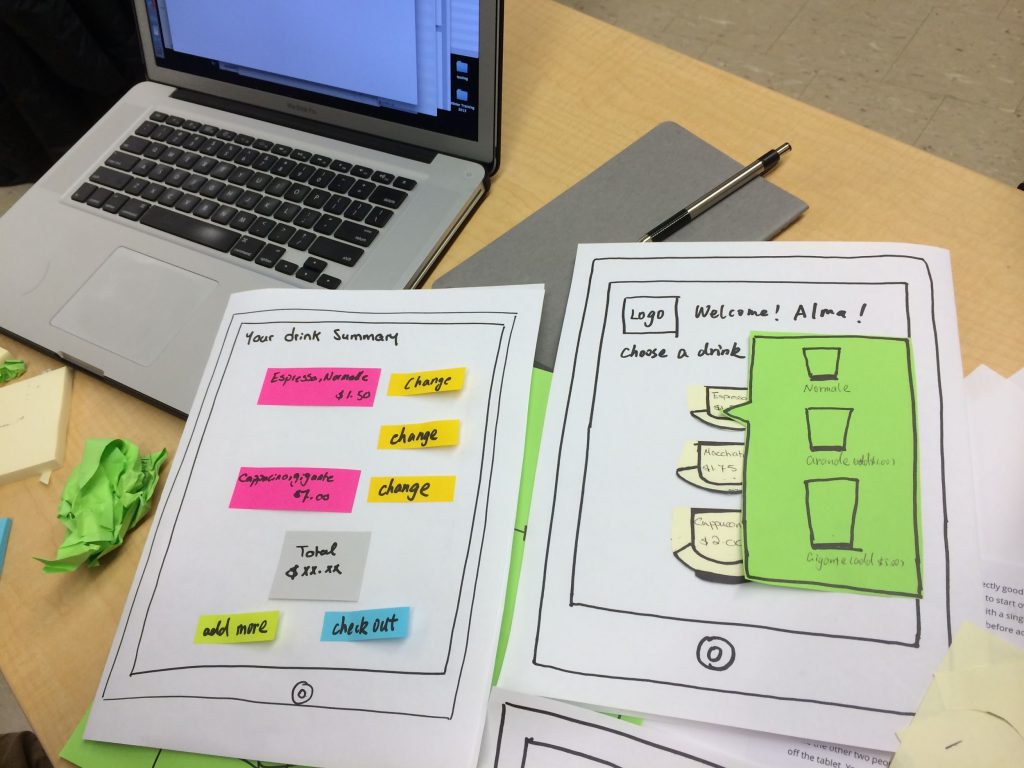Table of content
“When you build your own product, the first ones are most likely to FAIL.”
A thing to keep in mind before you start your journey when you build your own product is to consider the risks associated with it. It’s normal to be excited and get ahead of yourself, imagining all the sales, acknowledgement, and success that might come from your own offering.
But like any other business, new products usually take time and planning must be thought about carefully because rushing into the market without following a process could be a recipe for disaster.
Build Your Own Product by following the 10 Easy Steps-
Here is the 10 step product development strategy guide to aid you properly when you build your own product, which can also be applied to your first startup, web development, or small business, especially when you want to go further into building a new software product development as well with web app development.
1. To Build Your Own Product, Start with an Idea
Anyone can be an entrepreneur, but it is not for everybody. It is for those who are committed and willing to take risks along with the possibility of “countless” failures, uncertainty, and sleepless nights. In any venture, consider yourself as the product itself.
So start by asking yourself,
“Who am I? What do I want? What would the people need?”
Know yourself first. Assess your likes and dislikes, as well as your pain and what do you have to do to overcome it. From your answers, generate a unique idea, an overwhelming insight, an authentic brand that will surely give an impact on the market, or maybe to the world perhaps.
Still, note that there are fairly high chances that your first product is going to be similar to other people in the world. But don’t get disappointed. Don’t give up. Instead, find your uniqueness by delivering the key message as you build your own product.
What is your personal message? What message do you want your product to share? Connect and commit yourself to your first product. Own it and don’t stop there.
Do you think you can handle it? Let’s move forward and carry on.
2. Research and Identify Market Needs
In the first step, you tried answering “What would the people need?”
Other than your own answers, how do you think you can gather important data and search for more information as you build your own product? RESEARCH, of course!
In every new product development, research is always an integral part of the process.
How to do Research? You don’t need to be a professional or have years of experience to do it. You don’t need to hire someone to search for it for you. Anyone can do it. It’s your first product, so you can DO IT YOURSELF.
Search for important keywords that may relate to what you have in mind. What products are already out there? What do you think people will need not only as of today but maybe till the future?
If possible, you can do SURVEYS either online or offline. Talk to the people. Take a few minutes of their time and ask them directly. It’s what most people would want, having their message be heard. You may not know but it’s possible that you are making a difference in each one of them.
Ready to make a difference as you build your own product? Proceed to Step 3.
3. Define your Target Audience and Know How to Reach them
You have talked to different people in Step 2, but who among them could be your target audience? Could they form a part of your target market for your first product?
As you identify your target audience, one critical way is to clearly define them and determine facts on how they can contribute to your product development life cycle. Communication is the key as you build your own product.
Imagine that your product is the middleman between you and your target audience.
There are different ways to reach your target audience effectively, but another important thing to keep in mind is there are different barriers to communication. There could be instances that you will not be able to reach them considering that as you communicate for one demographic, it could not be as effective to another.
Still, you must learn to empathize with how they respond, get into their minds so you will be able to completely understand their behavior.
All these will contribute and give direction to your marketing and product development strategy as it promotes the consistency and authenticity of your first product message when you build your own product.
Yet, you know that this is still not enough, so read the next step.
4. Determine the Gap & Define the Minimum Requirements to Build Your Own Product
Now that you already know how to reach your target audience and connect with them. It’s time to determine the gap you most likely to fill whether it could be either a physical or emotional gap from which your target market would need.
For example:
Music through Headphones (the product) could fill-in one’s emotional gap (depression, stress), while a Wheelchair (the product) could fill-in one’s physical gap (immobility).
This is where you analyze and completely understand consumer behavior. Know where the gaps are as you define the minimum requirements when you build your own product.
No need to add unnecessary, extravagant features that you think might “take someone’s breath away.”
Remember that it is your first product so keep it simple. Though this doesn’t mean that you cannot upgrade in the future. Of course, you can, but as of now, take the baby steps, focus on the key features and start with simplicity.
In this way, you will be able to explore your target audience and discover what they truly want, which you will discover as you read along.
5. Design Multiple Versions and Pick your Top 3
As you understand the consumers’ behavior when you determine the gaps in the previous step, you will understand the buying journey as well. This represents the foundation of every marketing and sales activity that’s why an intimate understanding of your target audience including their pain and consumer journey is needed.
This understanding will guide you in designing multiple versions when you build your own product. This step is where your patience and creativity come in. Build as many product versions with the initial concept as you can imagine. Make it unique and innovative so think big and think the impossible.
It could be anything less than perfect. It could be unfinished or unattractive, but at least, you have many to choose from. So pick at least 1-3 of the product versions you like the most and determine which features you like in each.
Always make sure that no matter how many versions you have or how many features it has, remember why you want to build your own product in the first place. Ensure that it delivers one consistent and authentic message, the voice of your first product.
Then continue improving it until you’re ready for the next step.
6. To Build Your Own Product, create your First Product Prototype
In this step, you will get a hands-on connection to build your own product. There are various affordable ways to make product prototypes. If it is a physical product then you can either buy a cheap 3D printer, a carving foam and a wood or maybe invest in manufacturing and industrial equipment. If it’s an online product, there are wireframing tools available when creating a website or an app, or web tools such as Mockflow or Adobe products.
You can build your own product and create its first prototype either 3D printed or even hand-made, but whatever the case is, make sure that it hasn’t been done before. At least, it should be uniquely original and authentic.
Be the first and pursue that big idea you ever wanted. Secure it in the next step.
7. Secure Your First Product Online Identity
In the world today, before you launch your first product, you must take into consideration and secure your online identity first. There are already numerous cases of online identity theft, and it has been affecting businesses from all over the world.
In an article entitled 7 Ways to Protect Yourself from Business Identity Theft, these are the seven points you may at least consider before proceeding to the next step:
- Switch to Digital Statements
- Invest in a Quality Shredder
- Build a Secure Filing System
- Follow Digital Security Best Practices
- Monitor Business Credit Reports
- Well-Planned User Data Access
- Use Strong Passwords and Don’t forget to Secure Backups
As mentioned, business identity security is a serious business, and having to get lawyers involved is never cheap, so at least explore this area first before you build your own product and launch it.
Now if you’re all prepared and ready, know that you have come so far.
Be proud and you can now proceed to Step 8.
8. Validate your Product Prototype, Know your Competitors, and DARE TO BE DIFFERENT
As you’re done with creating your first product prototype while securing your online identity, it is now safe for you to test and validate it with your potential users or customers. Check if it delivers its expectations in the marketplace to determine if it’s a success or a failure.
You don’t need to make it expensive or costly. Make it just enough for them to engage and give you honest feedback. The most essential thing is to see how they understand and interact with your product even if it’s just your first prototype.
Never expect anything. Don’t expect it to be all positive and ready to go. Actually, it’s better if you receive negative and disappointing comments rather than all positive ones so you’ll know where and what to improve. In addition, during this step, aside from your own research, you can also ask your potential customers who are now evaluating your first product prototype to identify who could be your competitors.
What are they offering that you currently do not? Do you even have a chance against them? Make them rate your product prototype, and ask what could be changed and improved to be at least in line with them or could potentially surpass them? Is it the features, price, distribution, design, or competitor size? Whatever response you get from them, get your pen and paper, and take note of all of it.
In this case, you don’t have to revisit Step 1, as you already decided and committed to your product and the message you want to deliver. Instead, if you choose to continue improving, be the innovative leader, and dare to be different, then take a deep breath and read on to the next step.
9. Get Everyone on the Same Page and Refine your Design to Build Your Own Product
This is the step where you unify and gather the whole team across all channels, including freelancers and interns. You may consider this as your last step before you officially launch your first product. The reason you don’t have to revisit Step 1 is that Step 9 is where you review, refine, and reevaluate your first product development life cycle the moment you decided to commit and build your own product.
It is also the moment when you get everyone on the same page and ask yourselves, is the product so similar to the competitor that it may fail? Is there a gap in the market that could at least position it in a new way?
With that been said,
“Are we going to change direction and go with software product development? Or go with web app development instead?”
“Are we going to start it all over again and take the safer route following someone’s footsteps?” or
“Are we all willing to take more risk and proceed further?”
If you all answered yes for the first two questions, then gather your team, start it all over again, and revisit Step 1 for new product development.
But if you answered “No” to both, and “YES” to the last question, then you may start to engage with your team further in a deliberate and thorough process of product development strategy finalization which includes multiple things like a marketplace or competition evaluation, SWOT, ROI determination, success and communication measurement planning, as well as identifying what product features are working or needs to improve as well as refining the function and its aesthetic.
As you go closer to the last step, you must create and finalize the guidelines for your new product’s tone and the key message you want to deliver through it. Ensure that your first product has a voice. Consistency is the key so don’t ever enter the market without first knowing who you are and how you want the world to know you.
So for the most important step.
10. Officially Launch your First Product
This is the most crucial step when you build your own product. It is where you will know if it is a success or a failure, but know for a fact that launching one’s first product is never easy.
Still, you have gone a very long way. You have already done almost everything before this product launch you have been waiting for. You have already tested and validated it beforehand until it breaks, and refined it from different feedback and criticisms.
You have also gathered your marketing materials with your landing pages, social media accounts, securing your first product online identity, and much more. Throughout this important step, you must still ensure that you know your story. Understand it so well that you can announce it to the media, new customers, brands you can co-market with, and many more. Be a great storyteller and share your story through your first product to anyone, to the world, across every digital channel.
Just always remember that this is an evolving process, where you constantly and consistently build, prototype, and refine if not your first product then every product you can ever imagine which you wanted to share with the whole world.
So regardless if building your own product is a success or a failure, you can always take the knowledge you have discovered and start all over, and each time, it will move you closer to success. As they say, the sky’s the limit.
It always takes time when you build your own product. But it doesn’t mean that you just have to sit back, relax, and wait for its outcome.
As you wait, start planning for your first product’s next version. Step 10 is not the last step, but the most important step to consider for your next product journey. Keep your eyes and mind wide open for customer feedback especially when you make mistakes. No need to point fingers at anyone, but instead, own it and make it right. Take your customer’s feedback to heart, learn from it, and use it to prepare for your product’s next model.
Be optimistic and consider it as a ticket to success when you build your own product.
Summing Up
Are you considering building an App or an E-commerce website where you can officially launch your first product or the next version of it for your business? If you have a business idea and want to dive in with our exclusive network of verified IT companies, we can match it with your requirements within 24 hours. Supersourcing provides free consultation and free requirement gathering as well. No commission. No bidding. No hassle. In the era of high-end technology in this fast-moving world, we need a better platform to do the job, hence we are here. If you have any queries, we are always here to assist you. Feel free to reach out to us, and stay tuned to read more blogs and success stories of your interest.











